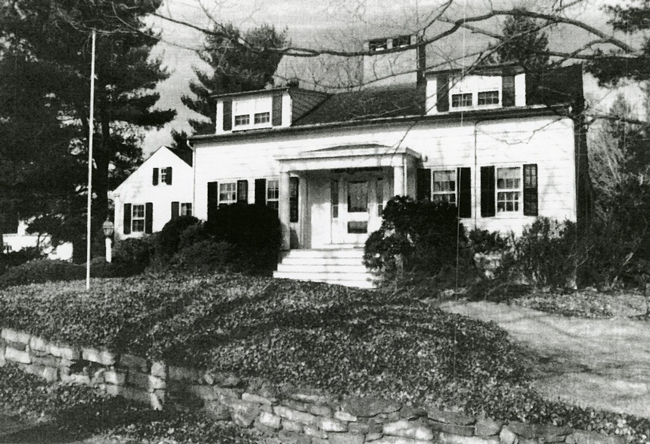
One of the few surviving residences of the 18th century in Greenwich, the Joseph Lyon house sits on land that earlier belonged to Lyon’s father, Thomas Lyon, who settled in Greenwich c. 1649. By 1688, a time when the town of Greenwich had 300 inhabitants, Thomas Lyon* was listed as one of 52 landowners. [The Thomas Lyon house, the oldest standing house in Greenwich, dating to about 1695, now stands at 1 Byram Road, facing West Putnam Avenue at the gateway to Greenwich. The house, donated to the town by the Lyon family, is slated for restoration by the Greenwich Preservation Trust.]
At his death in 1690, Thomas left his son Thomas Junior. of the same name the home lot “lying up the Byram River.” Thomas, Sr. and John Banks, were believed to be the first settlers in the Byram area of Greenwich, then spelled “Byarum.” The two had received 360 acres at the end of Byram Neck, including what is now Hawthorne Beach at the end of Byram Shore Road.
Joseph, one of the 14 children (by two wives) of Thomas Junior, was granted land in 1712 and bought additional acreage from his father in 1732 for 300 pounds. He already shared in “land laid out on ye west side of the Byram River known as Cook’s Purchase,” along with several members of the family and Thomas Bullis. Born in 1712, Joseph lived until the eve of the American Revolution in 1776 and was married twice, first to Mary Disbrow, later to an Anne, family name unknown.
The Joseph Lyon house is a white-painted Colonial with a columned front porch in Greek Revival style that dates to 1840 and squared-off dormers on the second floor. Built in 1734, the house retains its original front door with small windowpanes on both the top and the sides. The center chimney with three original fireplaces and two original mantelpieces also remains. The house was at first just three rooms each with its own fireplace.
The master bedroom, at one time known as the southeast chamber, has an original ceiling beam, wainscoting that also appears to be original and glass panes in six-over-six windows that were hand-blown, probably when the house was built.
The house was part of one of the earliest farms in Greenwich, surviving as a working farm until 1969, when it became a condominium association, with detached and a few attached homes on both sides of Weaver Street, swimming pools, tennis courts and a clubhouse. Appropriately, the main entrance is through an old covered bridge, and a few of the old farm outbuildings still dot the landscape.
Many of the Lyon descendants owned significant properties in Greenwich in later years. Augustus L. Lyon, for one, was involved in the sale of the 58 lots on Rocky Neck, now more familiar as Steamboat Road. He was also the owner of the Perryridge Road area and of a hotel at the top of Greenwich Avenue, the Mansion House, later the Lenox House. His land continued for 12 acres down the east side of Greenwich Avenue, where he raised vegetables for the hotel and hay for his horses, also providing pasturage for several cows.
Captain William L. Lyon was a clipper ship captain in the China trade, who lived on West Putnam Avenue and owned land extending down Greenwich Avenue, where he had a corral for his horses and gardens for roses and vegetables. William also organized the borough of Greenwich and was its first warden.

